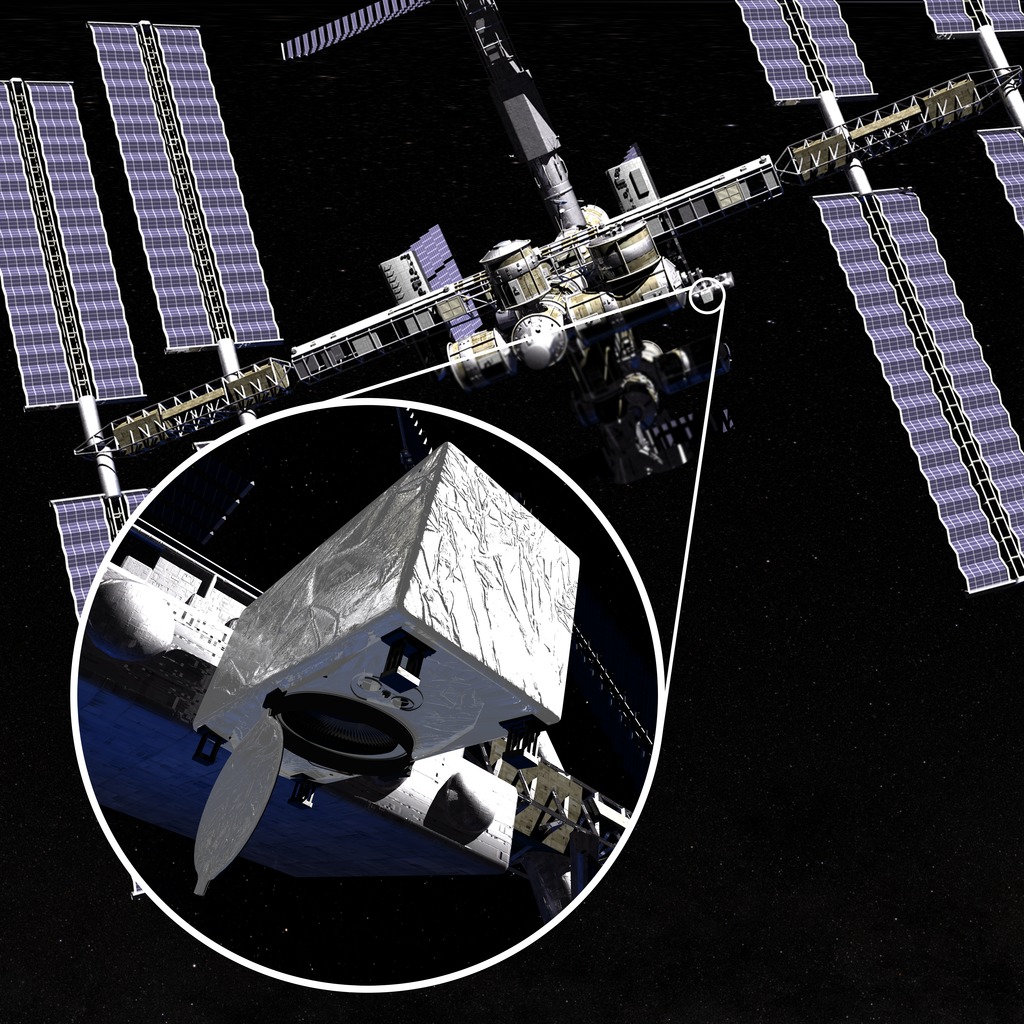CATS in Space: NASA Probe to Examine Climate Change

A new instrument called CATS heading to the International Space Station this weekend doesn't have claws, but it does boast a powerful laser that could help researchers better understand climate change.
NASA's Cloud-Aerosol Transport System instrument — which is set to launch toward the orbiting lab early Saturday (Jan. 10) aboard SpaceX's robotic Dragon cargo capsule — will track clouds and tiny particles of dust, smoke and pollution in Earth's atmosphere that influence climate.
"With data from CATS, scientists may gain an improved understanding of the structure and evolution of Earth's atmosphere," NASA officials said in a statement. "This could lead to enhancements to spacecraft launch, landing and communications systems. It also may help guide future atmospheric investigations of other planets and help researchers model and predict climate changes on Earth." [8 Ways Global Warming Is Already Changing the World]
Once shipped to space, CATS will be installed on the outside of the station on the Japanese Experiment Module's exposed facility. Facing the Earth, it will shine a LIDAR (light detection and ranging) instrument on the atmosphere to measure where particles are, what sorts of particles are within view and how they are distributed.
The space station is an especially beneficial site for the instrument because the outpost passes over most of the "primary aerosol transport paths" in the atmosphere, NASA officials said.
Since the station also experiences 16 sunrises every 24 hours, it allows scientists to better observe how day and night affect aerosols and clouds. The orbits of many Earth-observation satellites tend to limit the crafts' observations to certain times of day, agency officials noted.
CATS will eye Earth for the next six months to three years and will be controlled by the Payload Operations Integration Center at NASA's Marshall Space Flight Center.
Breaking space news, the latest updates on rocket launches, skywatching events and more!
Dragon will transport other science gear to the station, including one experiment studying microbe adaptation to space, another examining how flatworms regenerate and a wearable technology experiment that will examine how changes in astronauts' heart activity affect their sleep.
Saturday's launch will kick off the fifth of 12 unmanned cargo missions SpaceX plans to fly to the space station using Dragon and its Falcon 9 rocket under a $1.6 billion deal with NASA.
SpaceX also aims to bring the Falcon 9's first stage back for a bold and unprecedented landing on a floating ocean platform. The dramatic maneuver is part of the company's effort to develop fully and rapidly reusable rocket technology.
Follow Elizabeth Howell @howellspace, or Space.com @Spacedotcom. We're also on Facebook and Google+. Originally published on Space.com.

Elizabeth Howell (she/her), Ph.D., was a staff writer in the spaceflight channel between 2022 and 2024 specializing in Canadian space news. She was contributing writer for Space.com for 10 years from 2012 to 2024. Elizabeth's reporting includes multiple exclusives with the White House, leading world coverage about a lost-and-found space tomato on the International Space Station, witnessing five human spaceflight launches on two continents, flying parabolic, working inside a spacesuit, and participating in a simulated Mars mission. Her latest book, "Why Am I Taller?" (ECW Press, 2022) is co-written with astronaut Dave Williams.
